.

Members Of The Jehovah's Witnesses During The Group's Annual Convention At Chicago's Sox Park, A Baseball Field On The City's South Side. The Umbrellas Are In Evidence To Shade The Participants From A Hot July Sun: July 1973
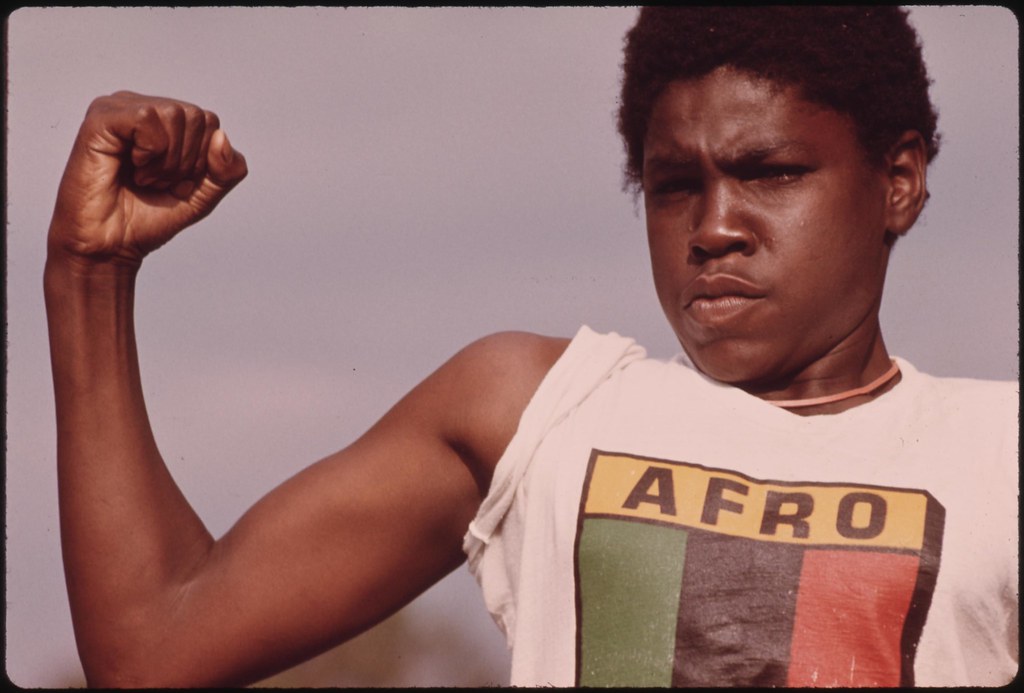
A Young Black Man Showing His Muscle During A Small Community Program In Chicago On The South Side. There Are Many Block Clubs And Community Groups Organized To Help Youngsters "Do Their Thing" During Special Weekend Programs In Empty Lots In The Black Communities. It Helps Them To Develop Character And Belief In Their Abilities As Well As Stressing A Positive Outlook On Life: August 1973

Black Youngsters Performing On An Empty Lot At 5440 South Princeton Avenue On Chicago's South Side At A Small Community Program Called "an Open Air Fashion And Talent Show" Presented By "the New Between The Tracks Council", A Community Block Group. It Is One Of Many Block Clubs And Community Groups Organized To Help Youngsters "do Their Thing" During Special Weekend Programs In Empty Lots In The Black Communities: August 1973
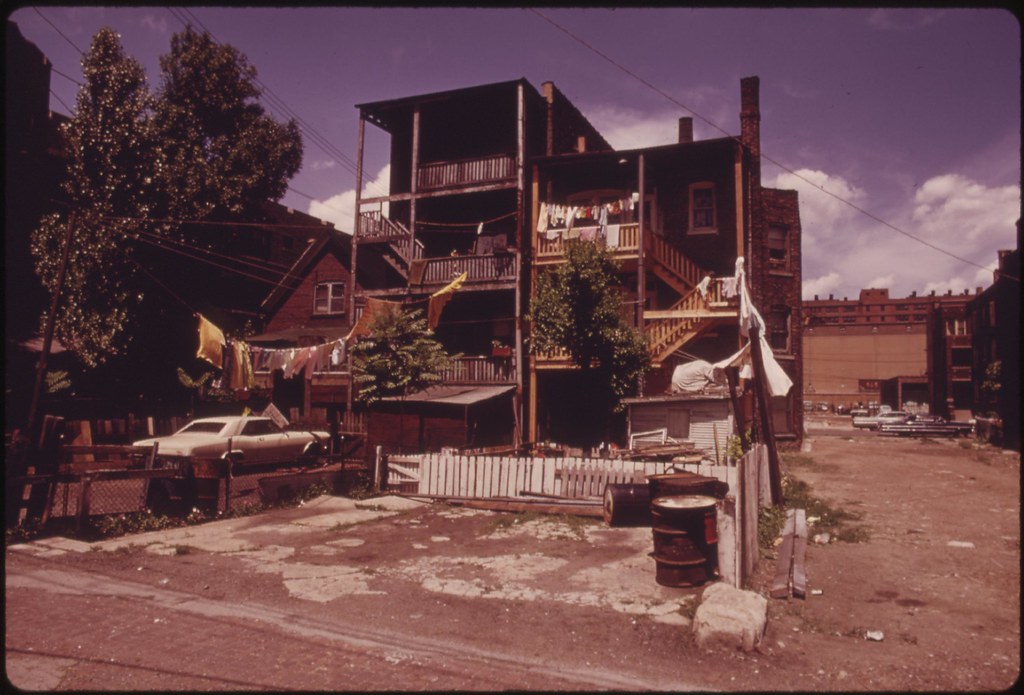
Black Community Older Housing On Chicago's West Side. This Area In
1973 Had Not Quite Recovered From The Riots And Fires During The Mid
And Late 1960's. According To The 1970 Census, 22 To 29% Of The
Residents Were Below The Poverty Level. Black West Side Businessmen
Formed An Organization, Funded By The Federal Government, Which
Resulted In Agreements With Major National Franchises And Resulted In
Some $20 Million In Jobs For Area Citizens By 1974: June 1973
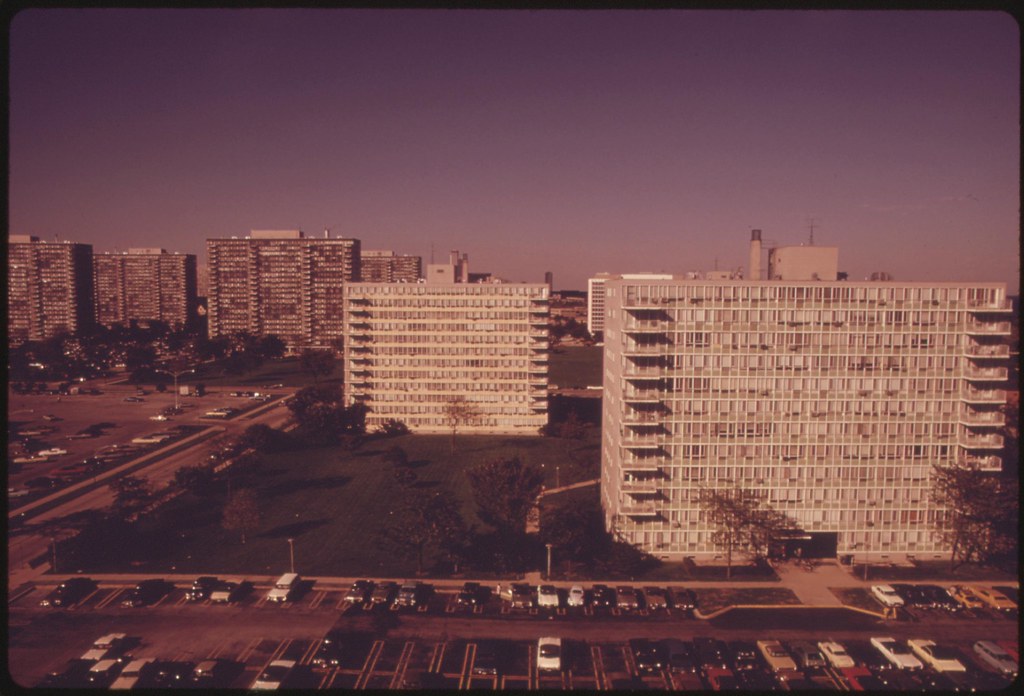
Lake Meadows Apartment Complex On Chicago's South Side Inhabited 70% By Blacks. They Attract Persons With Middle To Upper Income Brackets ($14,000 And Up). There Are 2,900 Apartments In 10 Buildings, Five That Are 12 Stories High And Five That Are 27 Stories Tall. They Are Located From 31st To 35th Street At Dr. Martin Luther King Drive. Of Families Earning $10,000 To $25,000 In The Area In 1970 Some 35% Were Black And 60% Were White: March 1974
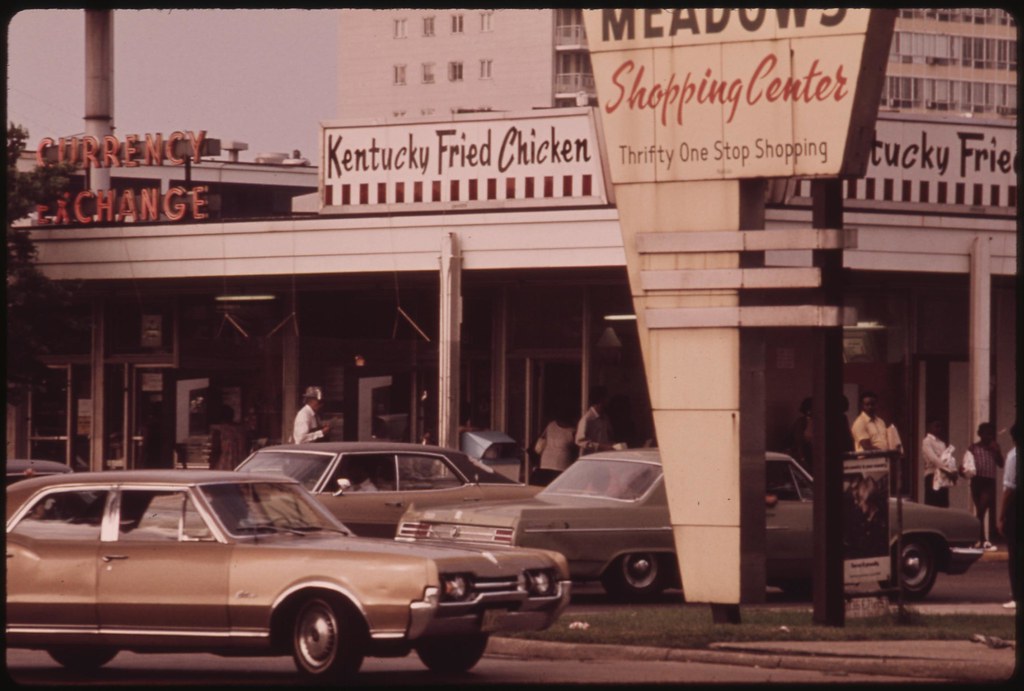
Lake Meadows Shopping Center On Chicago's South Side Which Is Frequented By Blacks. From 1960 To 1970 The Percentage Of Chicago Blacks With An Income Of $7,000 Or More Jumped From 26 To 58%. Median Black Income During The Period Increased From $4,700 To $7,883 Although The Gap Between What They And The Whites Received Actually Widened: June 1973
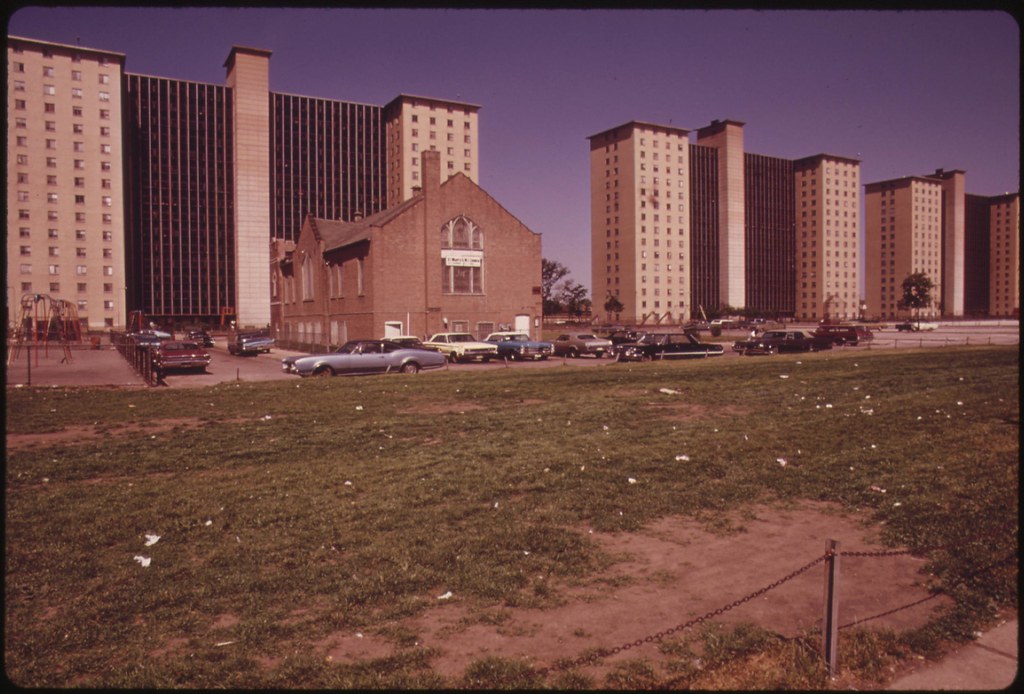
Robert Taylor Homes, A Low Income Highrise Apartment Complex Inhabited By Blacks On Chicago's South Side. There Are 28 Buildings With 4,312 Apartments Housing 25,220 Persons. A Goal Of Many Residents Is To Find A Job That Pays Enough For Them To Reach Middle Class Status And Move. From 1960 To 1970 The Percentage Of Chicago Blacks With An Income Of $7,000 Or More Jumped From 26 To 58%. In 1970 Blacks Had A Median Income Of $7,883, But It Was $3,603 Less Than That For Whites: June 1973
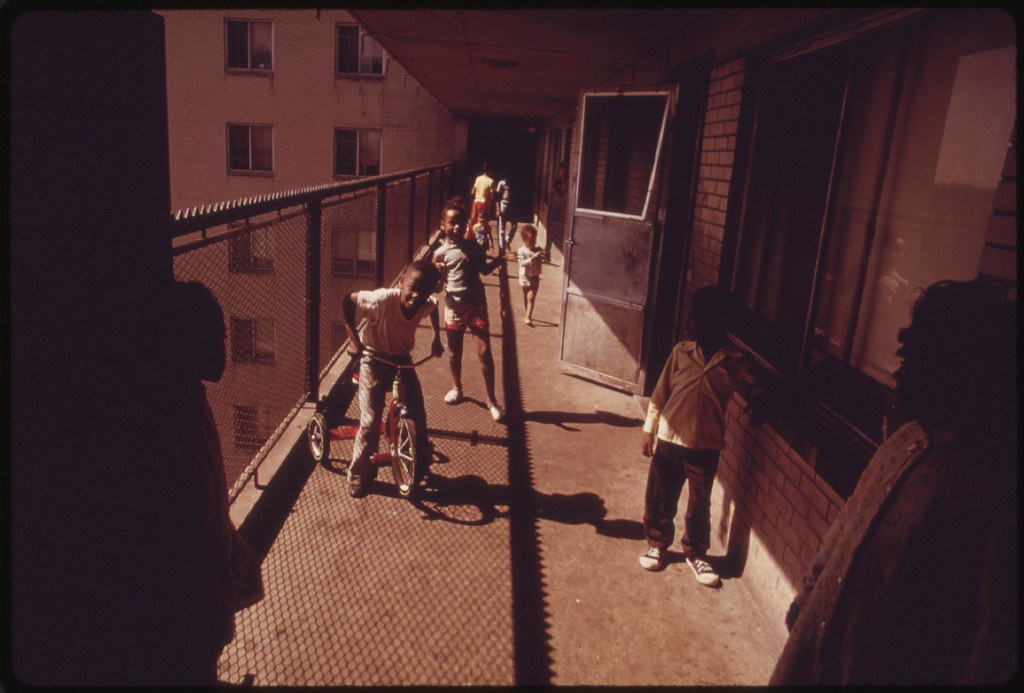
Black Residents On One Of The Balconies Of The Robert Taylor Homes, A Low Income Highrise Apartment Building In Chicago. It Is A Complex Of 28 Buildings Located Between The 3900 And 5400 Blocks On State Street With 4,312 Apartments Housing 25,220 Persons. A Goal Of Many Residents Is To Find A Job That Pays Enough For Them To Reach Middle Class Status And Move. Median Black Income From 1960 To 1970 Increased From $4,700 To $7,883 But Was Still $3,603 Below Median White Income: June 1973
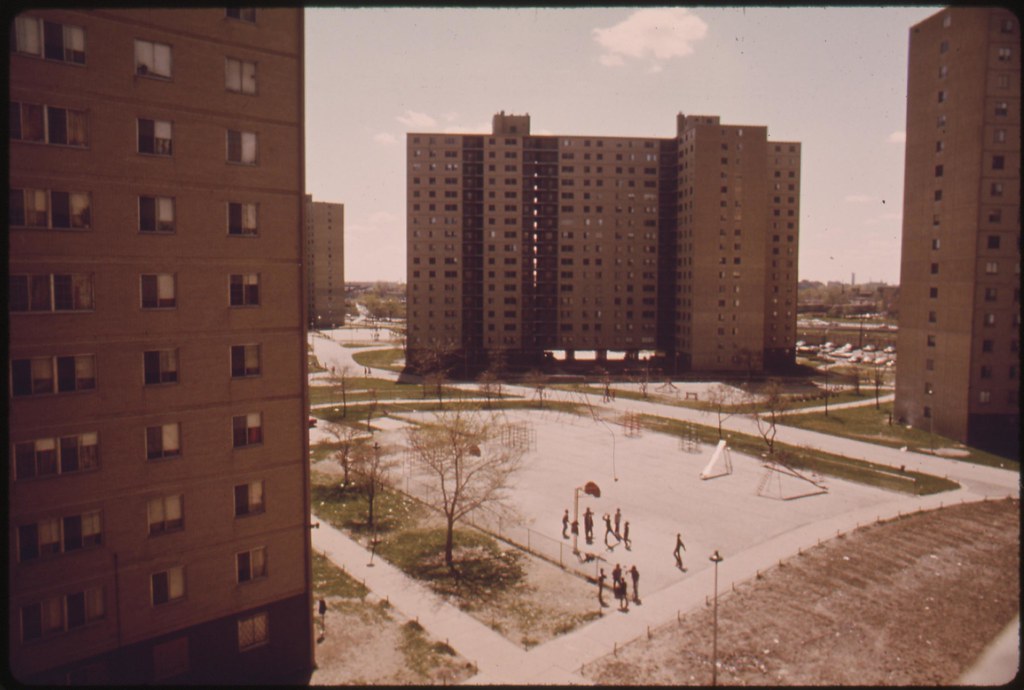
Stateway Gardens Highrise Housing Project On Chicago's South Side. The Complex Has Eight Buildings With 1,633 Two And Three Bedroom Apartments Housing 6,825 Persons. They Were Built Under The U.s. Housing Acts Of 1949 And 1968. They Are Managed By The Chicago Housing Authority Which Is Responsible For 41,500 Public Housing Dwellings. Chicago's Middle Class Blacks Live On The South Side, West Side And Near North Side In Highrise Apartments Along The Lake And In The Suburban Ring: May1973
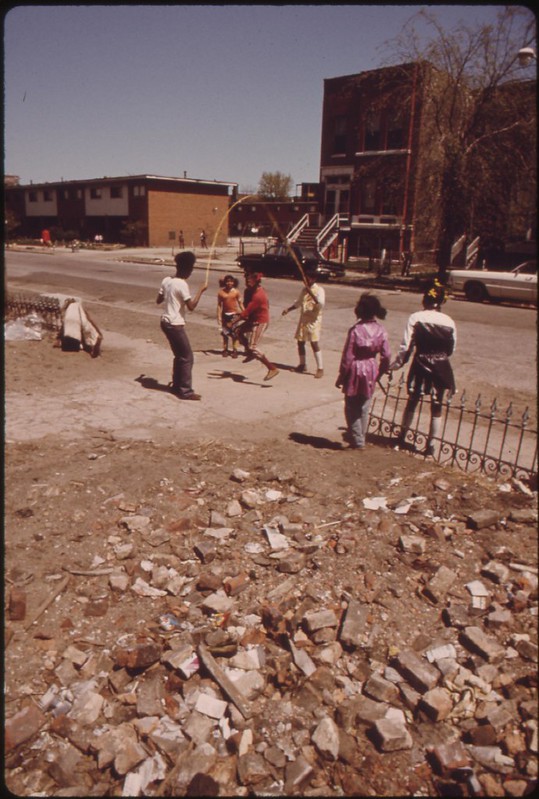
Black Children Play Outside The Ida B. Wells Homes, One Of Chicago's Oldest Housing Projects. There Are 1,652 Apartments Housing 5,920 Persons In 124 Buildings On The South Side. Many Buildings In This Part Of The City Have Been Systematically Vacated For Various Reasons. Even Though Many Are Salvageable, They Are Razed And Replaced With High Rent Highrises Which Have Little Or No Appeal To The Area's Previous Residents: May 1973
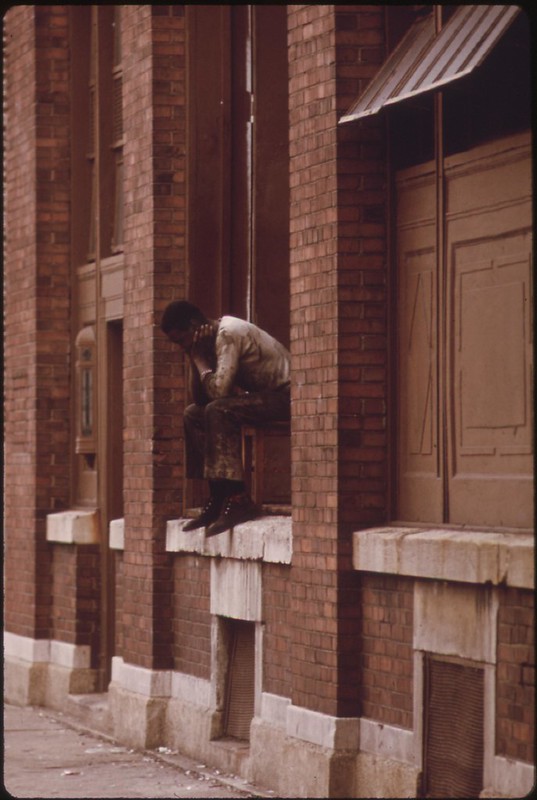
A Black Man Who is Jobless Sits on the Windowsill of a Building in a High Crime Area on Chicago's South Side, He Has Nothing to Do and Nowhere to Go, This Scene Contrasts with the Publications Which List the City as the Black Business Mecca Of The World, in Early 1975 Some 16% of Blacks were Believed to be Out of Work Double the Rate of White Unemployment, Black Owned Businesses in Chicago in 1970 Grossed $332 Million from 8,750 Businesses: July 1973
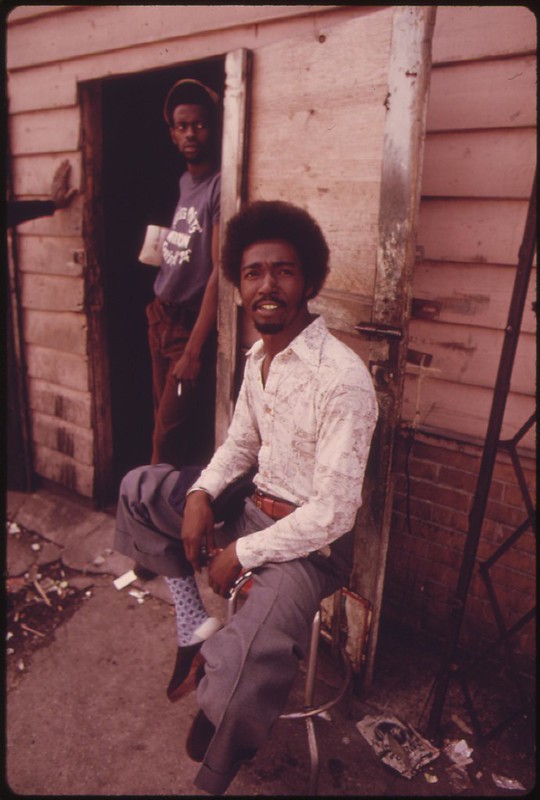
Black Men At The Entrance To A Pool Hall Where They Hang Around Daily, Located On Roosevelt Road In The Heart Of The Ghetto On Chicago's West Side. The 1970 Census Reported 22 To 29% Of The Area's Residents Were Below The Poverty Level. Helped By The Federal Government, A Local Organization Signed Agreements With Major National Franchises That Resulted In $20 Million In Jobs For Residents. In 1973 The West Side Had Not Yet Recovered From Earlier Riots And Fires: June 1973
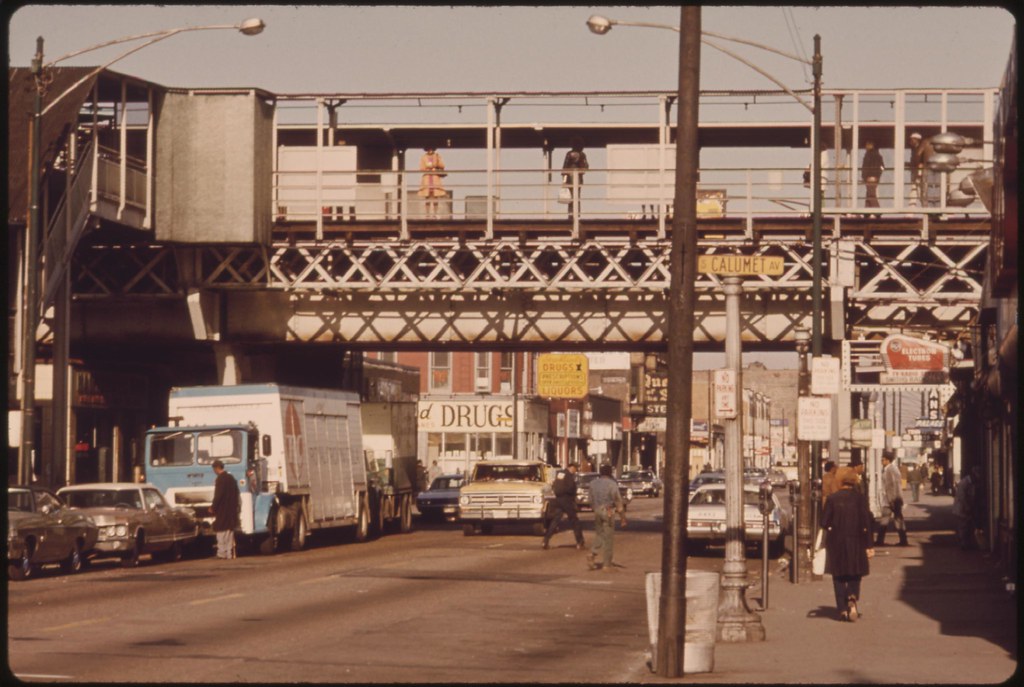
Once One Of Chicago's Busy Thoroughfares, 63rd Street Has Changed With The Character Of The City. Many Fires Have Resulted Driving Out More Businesses Which Either Follow The Flight Of Other Stores To More Prosperous Areas Or Cease To Exist. The "El" (elevated Train) Tracks Are Seen In The Upper Portion Of The Picture. During 1973 The Chicago Transit Authority Reported 95,160,535 Passengers Used The Facilities: July 197373

Empty Housing In The Ghetto On Chicago's South Side Structures Such As This Have Been Systematically Vacated As A Result Of Fires, Vandalism Or Failure By Owners To Provide Basic Tenant Services. Then The Vacated Buildings, Often Substantially Salvageable, Are Razed And Replaced With Highrise Apartments Which Appeal To Few Members Of The Black Community And Almost None Of The Area's Previous Residents: May 1973
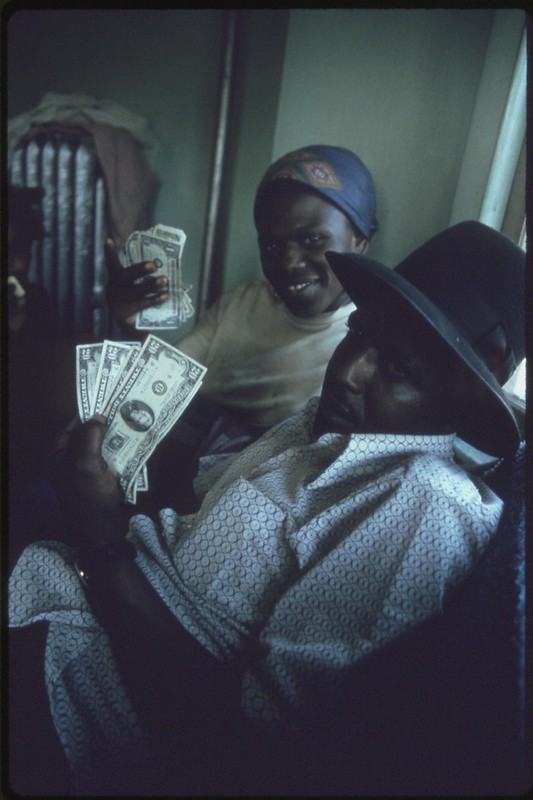
Black Family Count Their Cash In Their Apartment In South Side Chicago. From 1960 To 1970 The Percentage Of Chicago Blacks With An Income Of $7,000 Or More Jumped From 26 To 58%. Median Black Income During The Period Increased From $4,700 To $7,883. But The Median Income Of Whites Increased Even More And Widened The Gap From $3,251 In 1960 To $3,603 In 1970: June1973
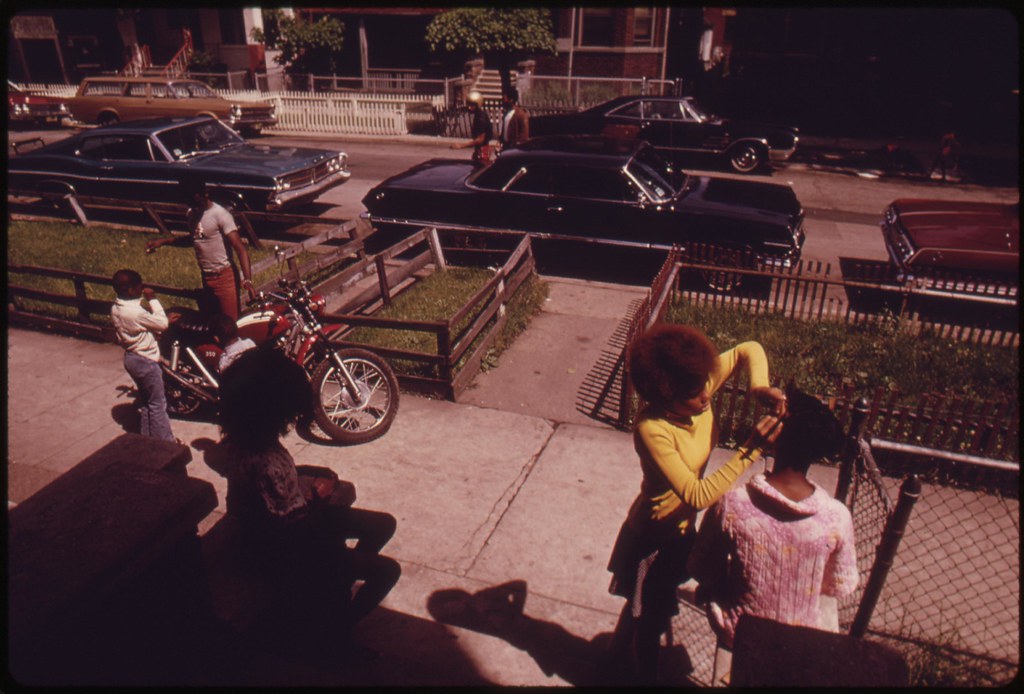
Black Neighbors Outside On Chicago's West Side. They Are Part Of The Nearly 1.2 Million People Of Their Race Who Make Up More Than One Third Of Chicago's Population. The West Side Was Hard Hit By Riots And Fires In The Mid And Late 1960's. The 1970 Census Noted That 22 To 29% Of The Area's Residents Lived Below The Official Poverty Level. Black Businessmen Reached Agreements With National Franchises Which Resulted In Pumping $20 Million In Jobs For Residents By 1974: June 1973

Black Neighborhood On Chicago's West Side. The West Side Was Hard Hit By Riots And Fires In The Mid And Late 1960's. The 1970 Census Noted That 22 To 29% Of The Area's Residents Lived Below The Official Poverty Level. Black Businessmen, Helped By Federal Funding Reached Agreements With National Franchises Which Resulted In Pumping $20 Million In Jobs For Residents By 1974: June 1973
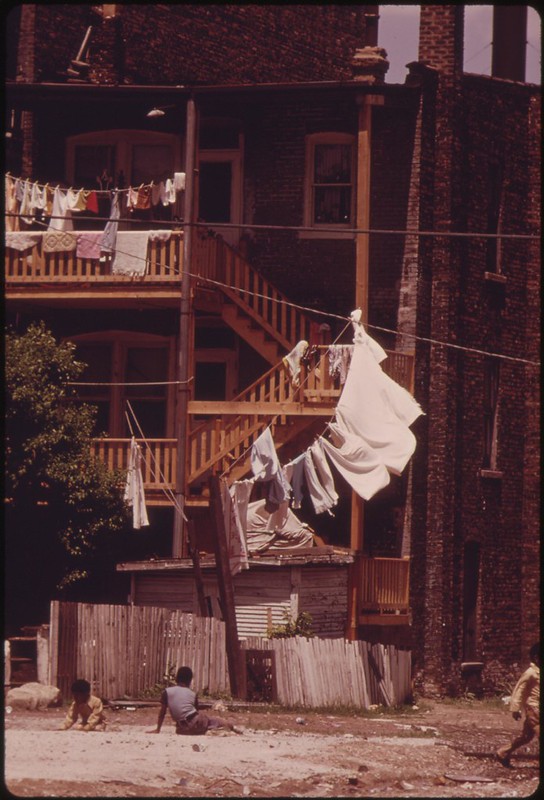
Black Community Older Housing On Chicago's West Side. This Area In 1973 Had Not Quite Recovered From The Riots And Fires During The Mid And Late 1960's. According To The 1970 Census, 22 To 29% Of The Residents Were Below The Poverty Level. Black West Side Businessmen Formed An Organization, Funded By The Federal Government, Which Resulted In Agreements With Major National Franchises And Resulted In Some $20 Million In Jobs For Area Citizens By 1974: June 1973
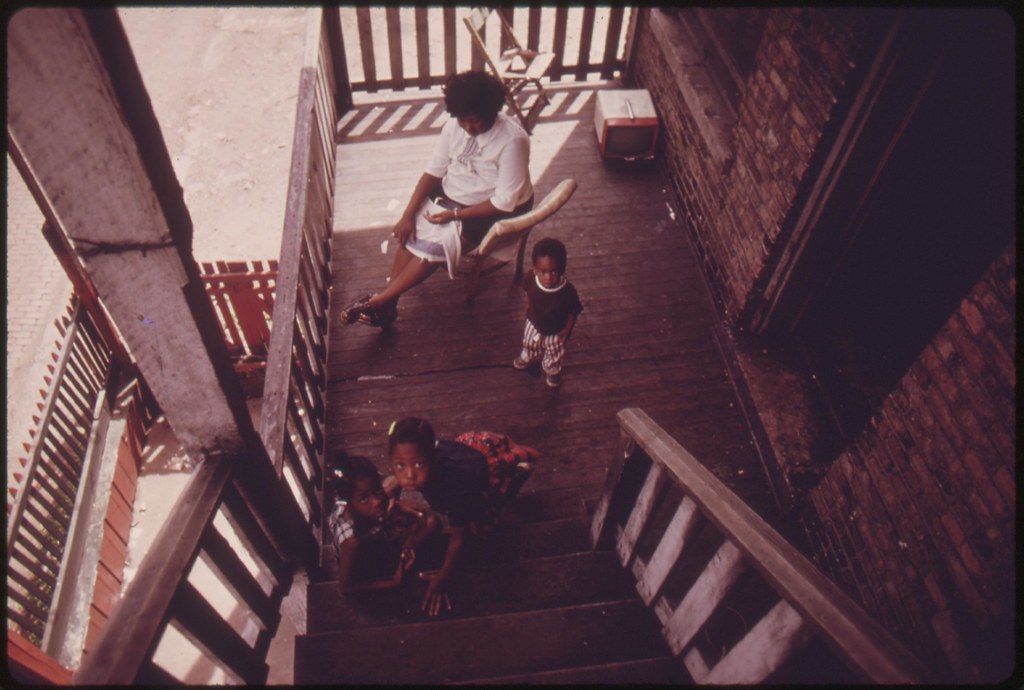
Older Housing In The Black Community On Chicago's West Side This Area In 1973 Had Not Quite Recovered From The Riots And Fires During The Mid To Late 1960's. According To The 1970 Census, 22 To 29% Of The Residents Were Below The Poverty Level. Black West Side Businessmen Formed An Organization, Funded By The Federal Government, Which Resulted In Agreements With Major National Franchises And Resulted In Some $20 Million In Jobs For Area Citizens By 1974: June 1973
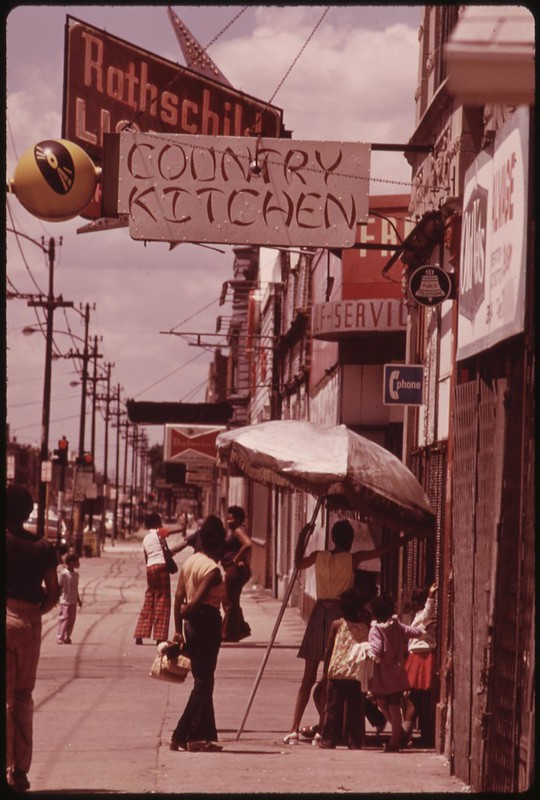
Street Scene In West Side Chicago. This Area Was Slow To Recover From The Riots And Fires Of The Mid And Late 1960's According To The 1970 Census, Some 22 To 29% Of The Area's Residents Were Below The Poverty Level. Then A Group Of Black Businessmen Formed The Garfield Organization Industrial And Commercial Association. With Federal Help They Reached Agreements With Several National Franchises That Resulted In Jobs For Area Residents That Totalled $20 Million By 1974: June 1973
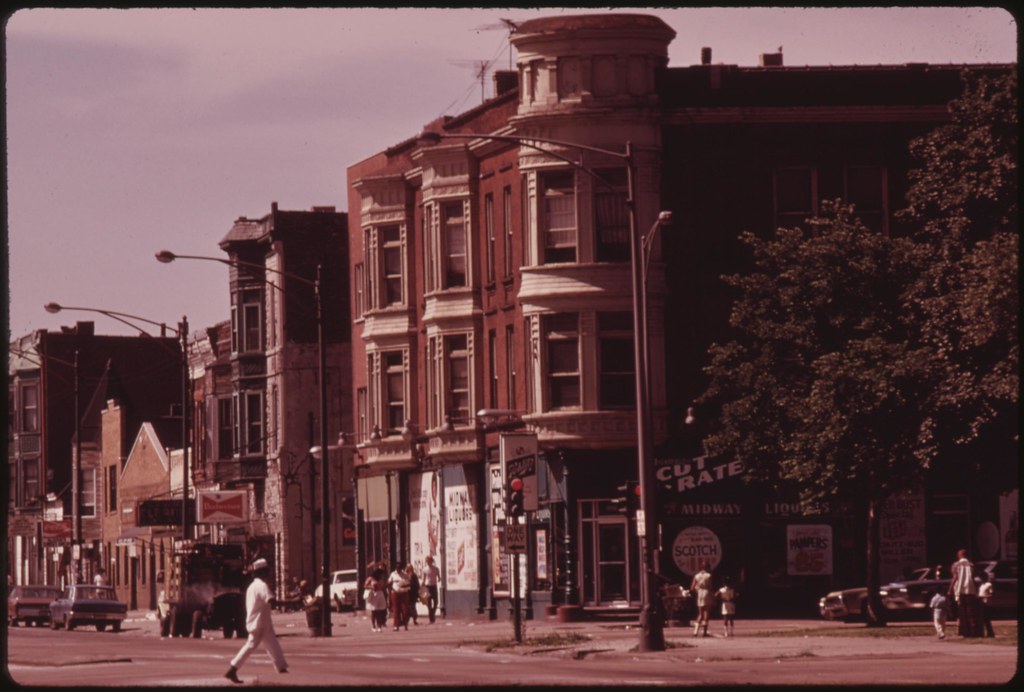
: South Side Black Community In Chicago With Small Businesses And Apartments Over The Stores In The Older Buildings Near 43rd And Indiana Avenue. Chicago Area Census Figures Show A Significant Gap In Economic Security Between Blacks And Whites. Only 35% Of Black Families Earned $10,000 To $25,000 In 1970 Compared To 60% For Whites. Of Families Earning Less Than $8,000 Some 50% Were Black And 21% White The 1970 Median Black Income In Chicago Was 65% Of White Families: June 1973
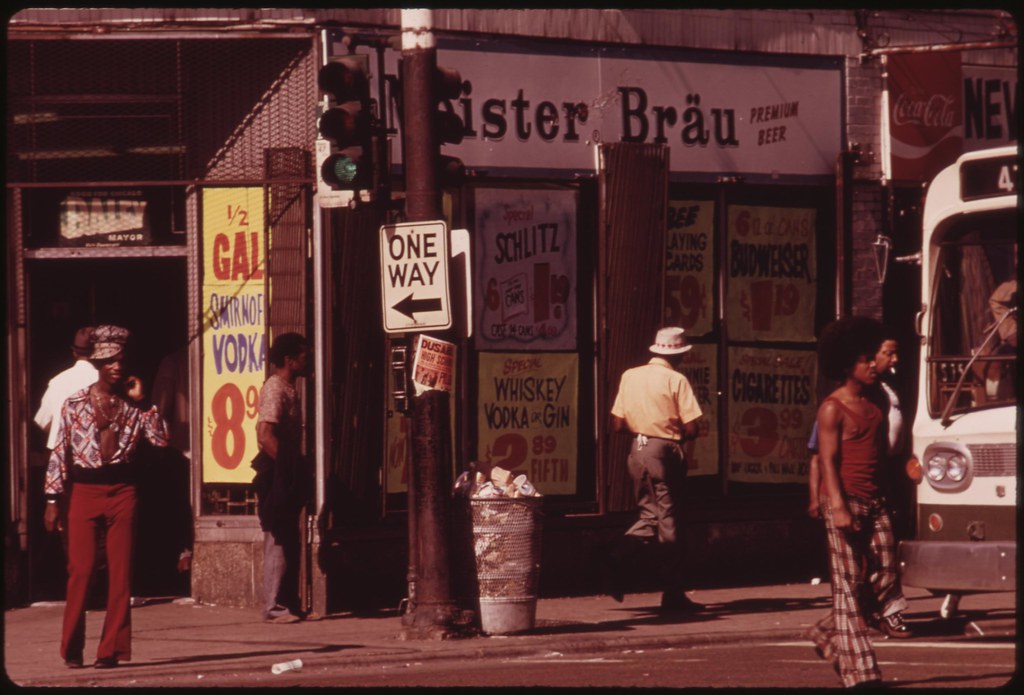
Street Scene On 47th Street In South Side Chicago, A Busy Area Where Many Small Black Businesses Are Located. Many Of The City's Black Business Owners Started With Small Operations And Grew By Working Hard. Today Chicago Is Believed To Be The Black Business Capital Of The United States. Census Figures In 1970 Noted That 8,747 Black Owned Businesses Were In Operation In Chicago And Grossed More Then $332 Million: June 1973
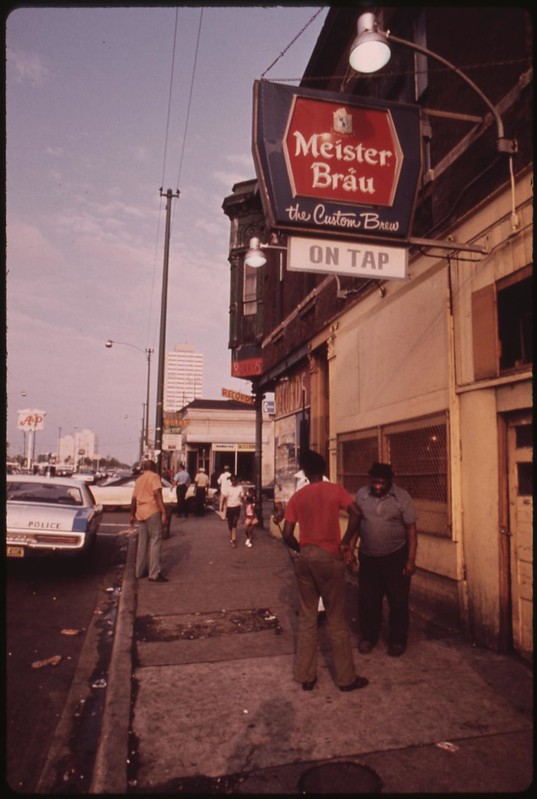
Street Scene On 47th Street In South Side Chicago, A Busy Area Where Many Small Black Businesses Are Located. Many Of The City's Black Business Owners Started With Small Operations And Grew By Working Hard. Today Chicago Is Believed To Be The Black Business Capital Of The United States. Census Figures In 1970 Noted That 8,747 Black Owned Businesses Were In Operation In Chicago And Grossed More Then $332 Million: June 1973
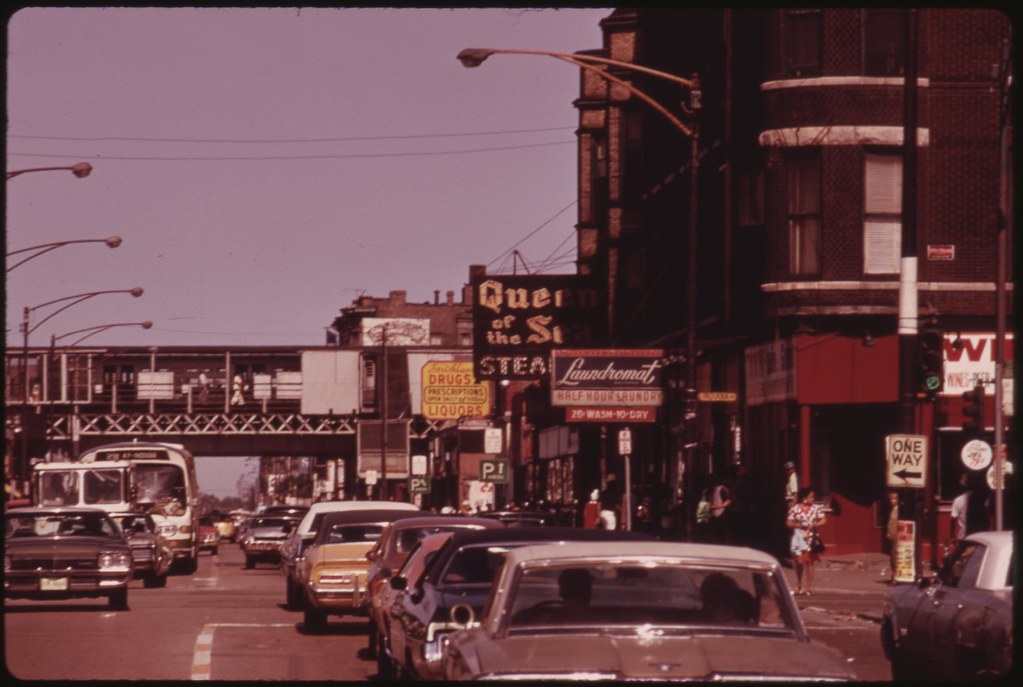
Street Scene On 47th Street In South Side Chicago, A Busy Area Where Many Small Black Businesses Are Located. Many Of The City's Black Business Owners Started With Small Operations And Grew By Working Hard. Today Chicago Is Believed To Be The Black Business Capital Of The United States. Census Figures In 1970 Noted That 8,747 Black Owned Businesses Were In Operation In Chicago And Grossed More Then $332 Million: June 1973

Chicago Ghetto On The South Side. Although The Percentage Of Chicago Blacks Making $7,000 Or More Jumped From 26 To 58% Between 1960 And 1970, A Large Percentage Still Remained Unemployed. The Black Unemployment Rate Generally Is Assumed To Be Twice That Of The National Unemployment Rate Published Monthly By The Bureau Of Labor Statistics: May 1974
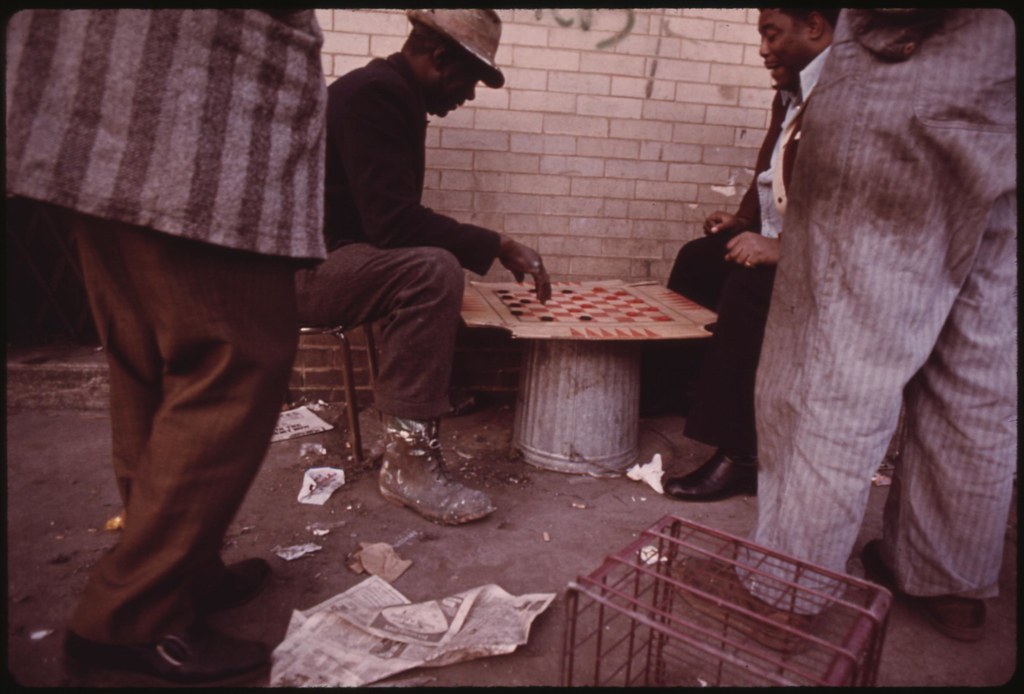
South Side Black Workers Passing The Time Playing Checkers On East 35th Street Before Going To Work In Chicago. The City Census Figures Show A Significant Gap In Economic Security Between Blacks And Whites. Median Black Income Between 1960 And 1970 Increased From $4,700 To $7,883 But The Dollar Gap Between The Two Races Widened. Blacks Were Receiving The Average Of $3,603 Less Than The Median White Family: May 1973
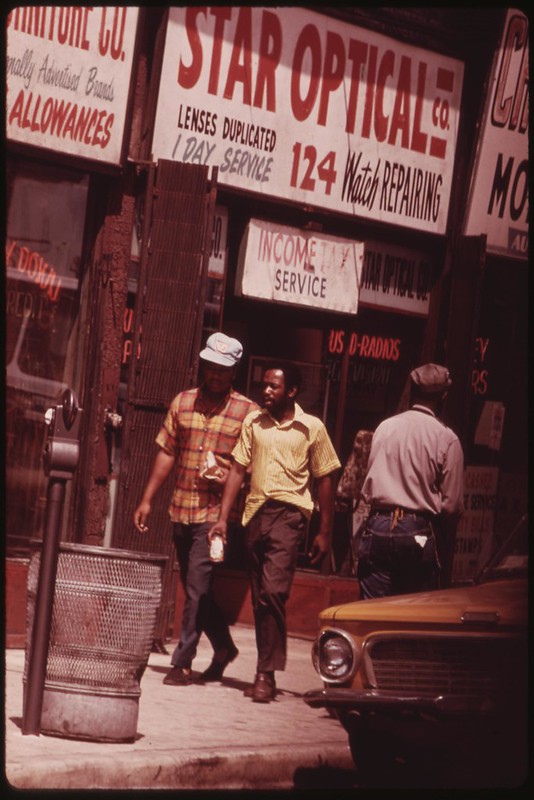
Ghetto Street Scene In Chicago On The South Side. The City Census Figures Show A Significant Gap In Economic Security Between Blacks And Whites. Of Families Earning $10,000 To $25,000 In 1970, 35% Were Black And 60% White. Of Families Earning Less Than $8,000 Some 50% Were Black And 21% White. In 1970 Median Black Income In Chicago Was 65% That Of White Families, An Improvement Of 5% In 20 Years, But An Actual Widening Of The Dollar Gap: July 1973
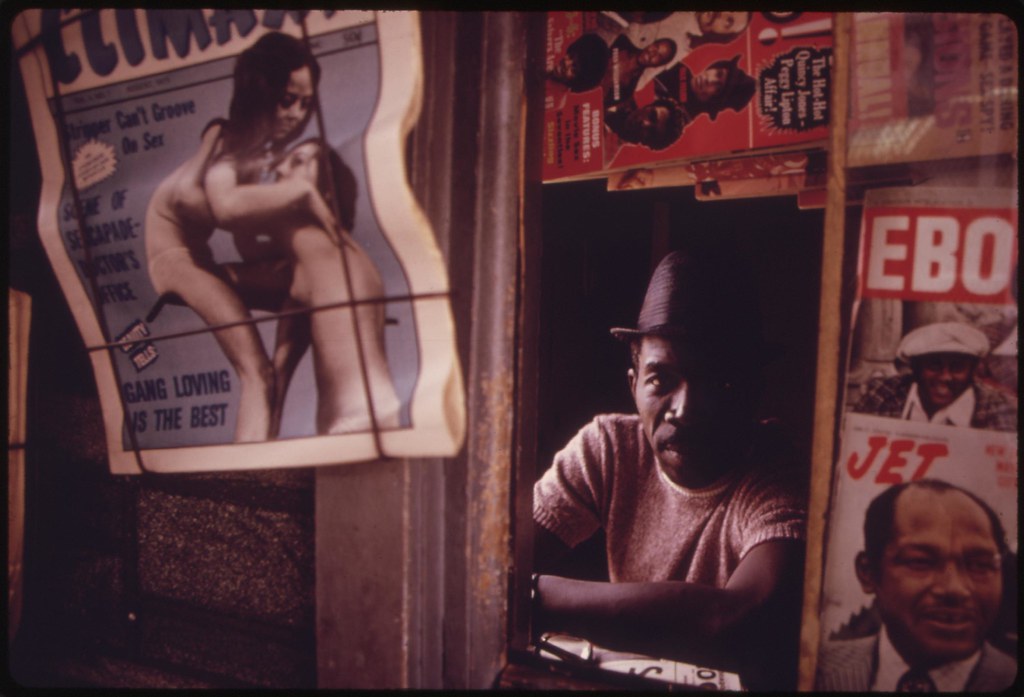
Black Man Operating A Newsstand In Chicago On The West Side The City Is Believed To Be The Black Business Capital Of The United States. Census Figures Show In 1970 There Were 8,747 Black Owned Businesses In The City That Grossed More Than $332 Million. But Black Capitalists Still Have More Trouble Staying In Business Once They Begin And The Main Reason Remains Racial Prejudice. Lack Of Capital Lack Of Business Expertise And Lack Of Support From The Black Community Are Other Factors: June 1973
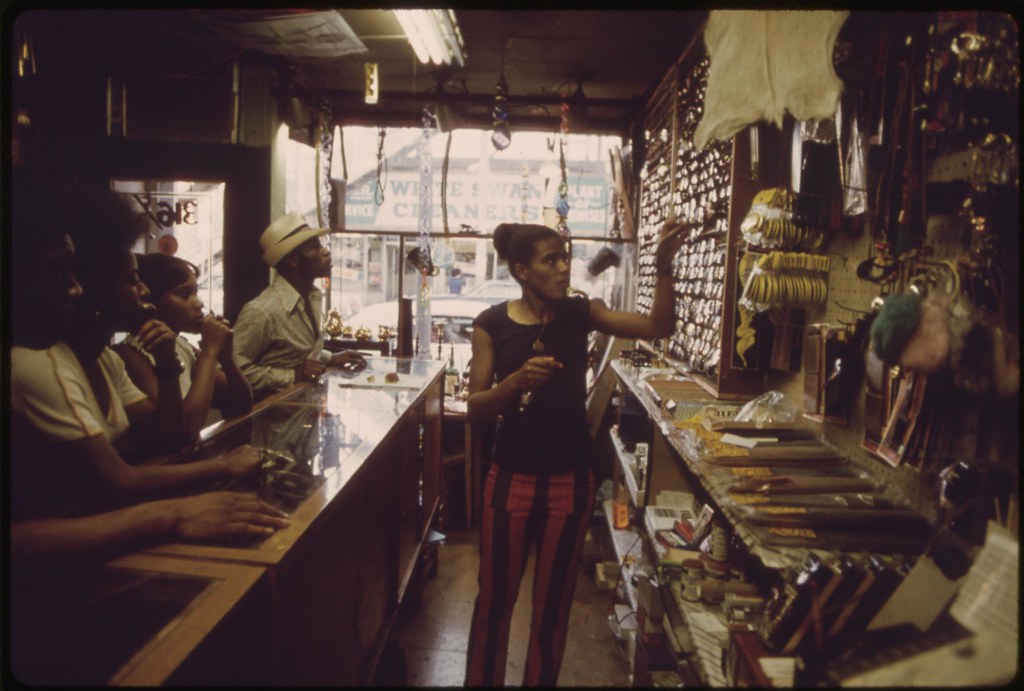
Black Owned Business On Chicago's South Side. The City Is Believed To Be The Black Business Capital Of The United States Census Figures For 1970 Showed There Were 8,747 Black Owned Businesses In The City That Grossed More Than $332 Million. In 1972 There Were 11 Black Owned Financial Institutions That Totaled Assets Of $254.9 Million. Black Enterprises Magazine Reported In 1973 That Chicago Had 14 Of The Top 100 Black Owned Businesses, One More Than New York: June 1973
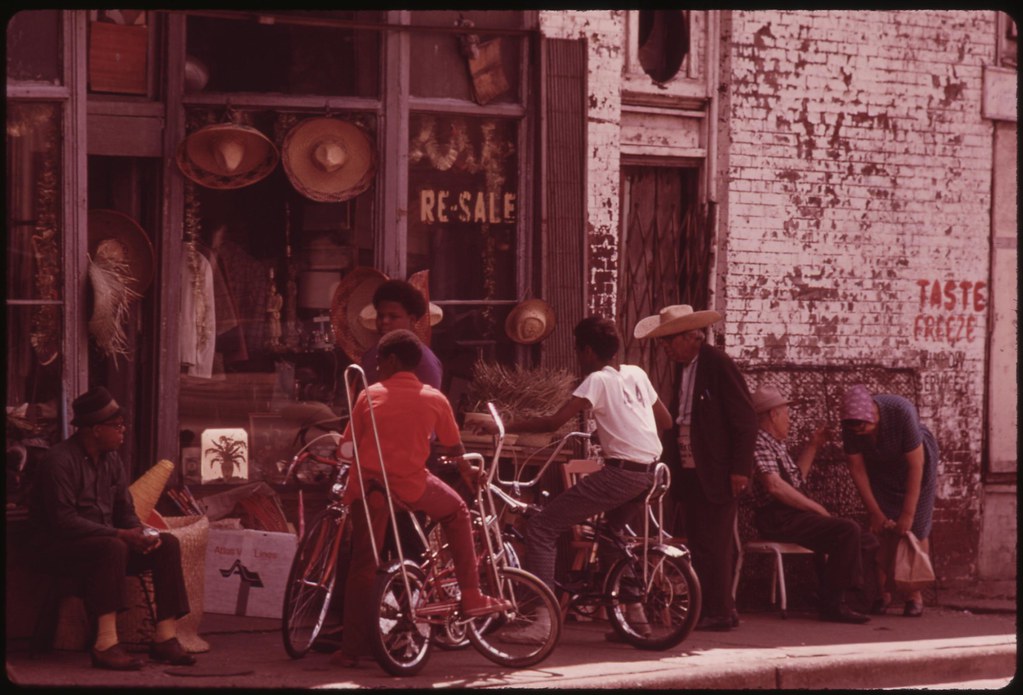
Sidewalk Merchandise On Chicago's South Side. Many Of The City's Black Businessmen Started Small And Grew By Working Hard Today Chicago Is Believed To Be The Black Business Capital Of The United States. Black Enterprises Magazine Reported In 1973 That The City Had 14 Of The Top 100 Black Owned Businesses In The Country, One More Than New York City: June 1973
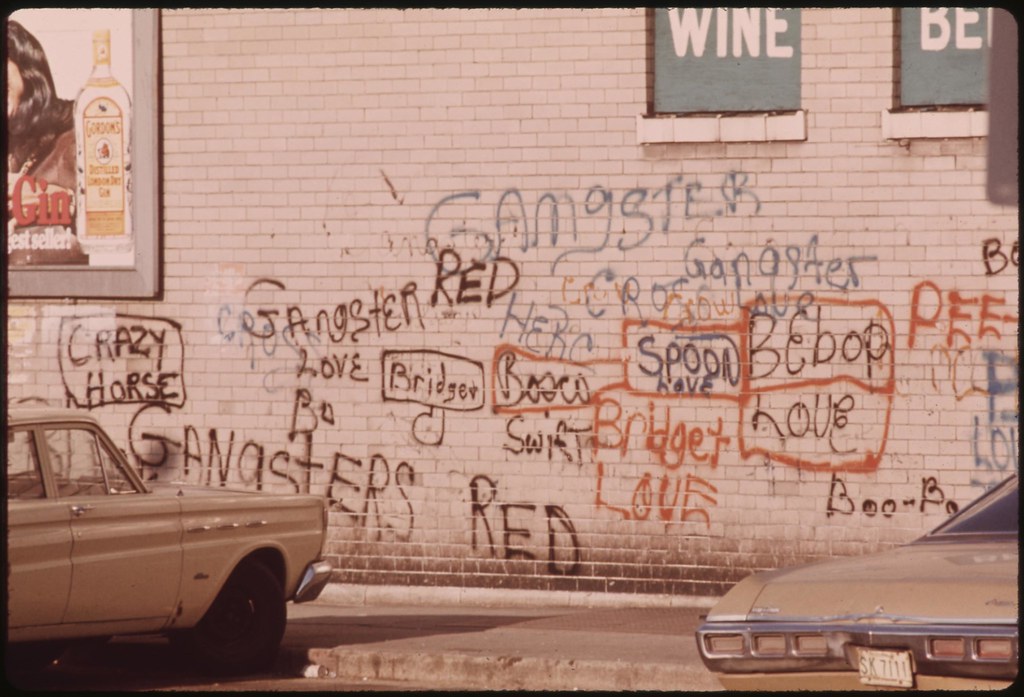
Graffiti On A Wall In Chicago. Such Writing Has Advanced And Become An Art Form, Particularly In Metropolitan Areas. Black Artists Also Have Used Walls On Buildings In Black Communities In Chicago To Paint Outdoor Murals. They Feel It Is A Means Of Sharing Art With People In The Ghetto Who Don't Go To The Museums. The Artists Also Have Given Painting Lessons To Community Groups By Decorating Walls On Some Buildings In Their Communities: May 1973
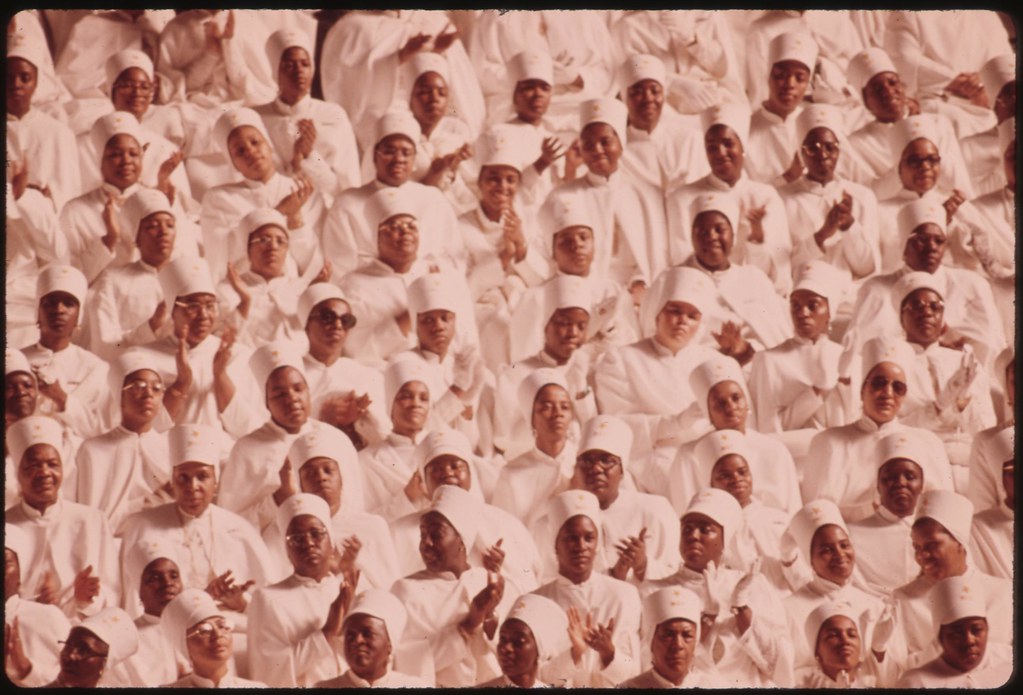
Black Muslim Women Dressed In White Applaud Elijah Muhammad During
The Delivery Of His Annual Savior's Day Message In Chicago. The City
Is Headquarters For The Black Muslims. Their $75 Million Empire
Includes A Mosque, Newspaper, University Restaurants, Real Estate,
Bank And Variety Of Retail Stores. (Muhammad Died February 25, 1975): March 1974
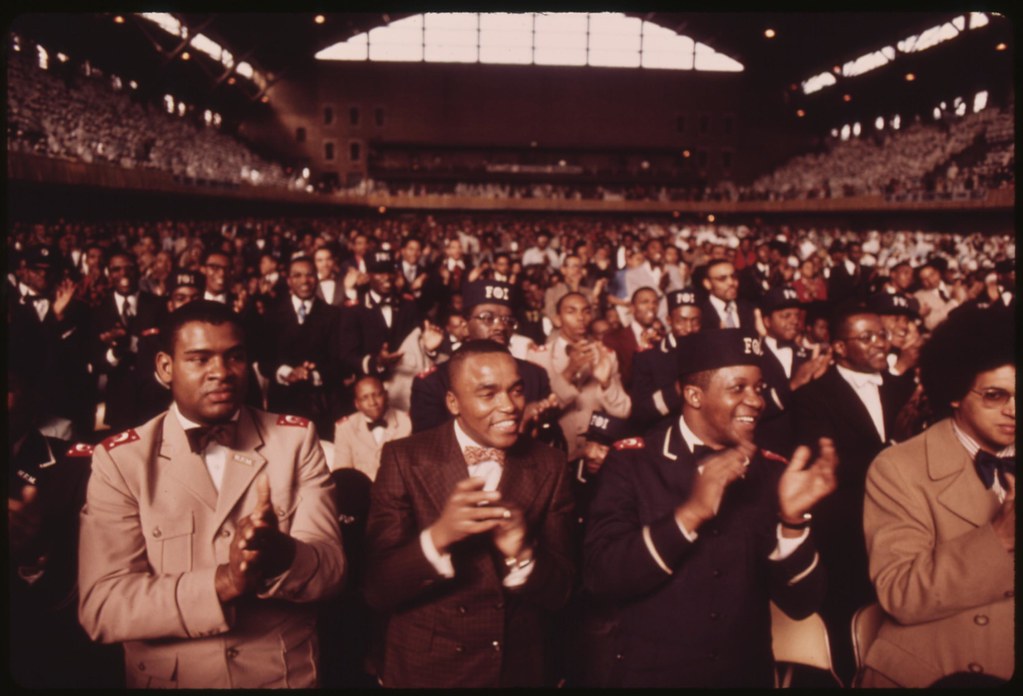
A Portion Of A Crowd Of Some 10,000 Muslims Applaud Elijah Muhammad During The Delivery Of His Annual Savior's Day Message In Chicago. The City Is Headquarters For The Black Muslims. Their $75 Million Empire Includes A Mosque, Newspaper, University Restaurants, Real Estate, Bank And Variety Of Retail Stores. Muhammad Died February 25, 1975: March 1974
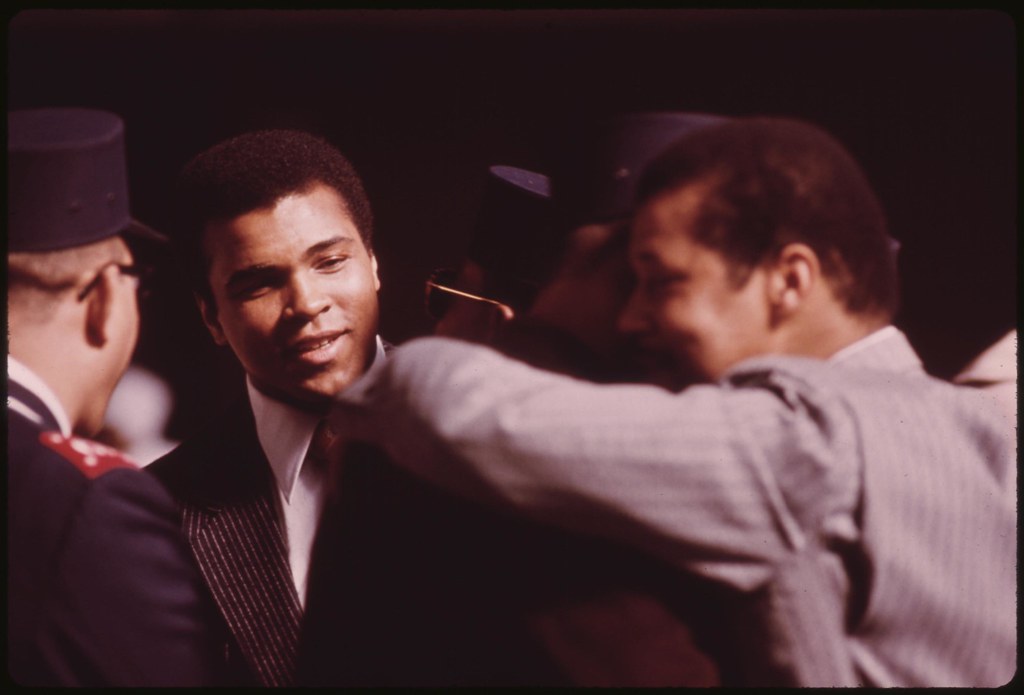
World Heavyweight Boxing Champion Muhammad Ali, A Black Muslim, Attends The Sect's Service To Hear Elijah Muhammad Deliver The Annual Savior's Day Message In Chicago. The City Is Headquarters For The Black Muslims. Their $75 Million Empire Includes A Mosque Newspaper, University, Restaurants, Real Estate, Bank And Variety Of Retail Stores. (The Muslim Leader Died February 25, 1975): March 1974
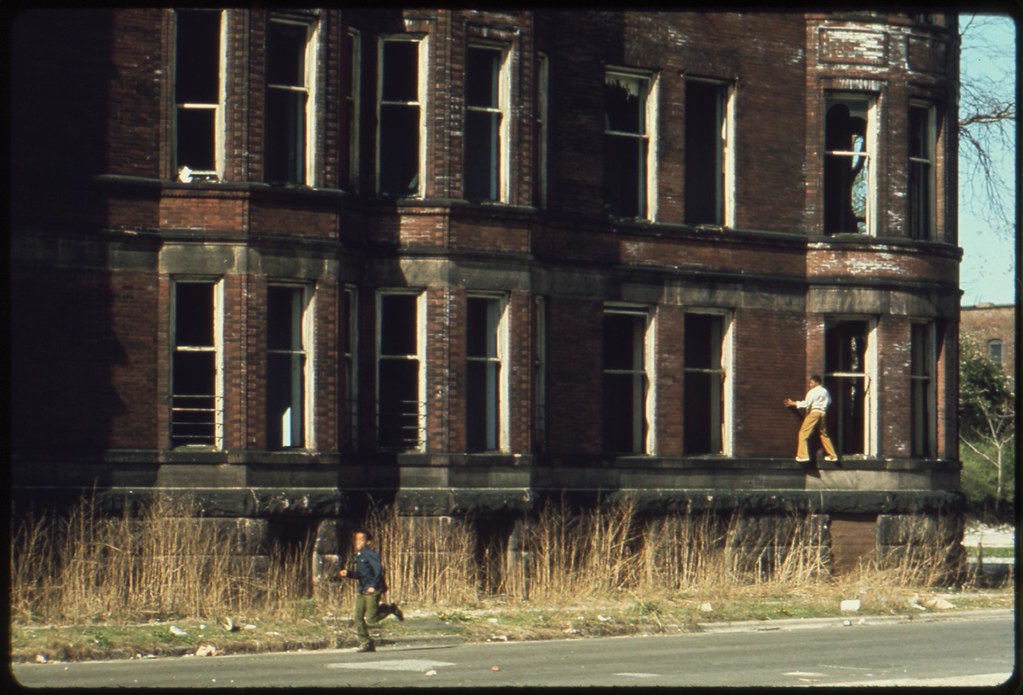
37th and Prairie Streets: May 1973
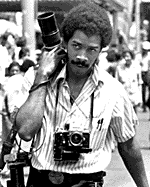
John H. White: photo by Jerry Tomaselli, 1977, courtesy of John H. White (National Archives and Records Administration)
Photos
of the African-American Community of Chicago by John H. White (1945-)
for the Environmental Protection Agency's Documerica project (US
National Archives)



10 comments:
John H. White, who took these pictures, was recently fired after 35 years on the job at the Chicago Sun-Times.
John White is also a teacher of the discipline he has long practised -- photojournalism, or PJ Love as he likes to call it.
A 1947 urban redevelopment plan projected to transform the "Bronzeville" ghetto areas of the South and Near West Sides of Chicago ultimately produced the desolate strip of concrete wastelands seen in an early stretch of John White's photos here. The outcome of the implementation of the plan, by the early 1970s, was the wholesale demolition of large swaths of variably run-down older brick-and-wood neighborhoods, passages of what sociologists call "scattered poverty", and their replacement by pockets of "concentrated poverty", bleak tracts of half-deserted highrises, broken glass, grit and crime sprawled across the ruins of the former communities. The end-of-the-world victory landscape envisioned and brought into barren reality by the developers, architects and city planners can be observed in some of the pictures here. For the people seen in John White's remarkable pictures from the early Seventies, this, then, was the life there was to live.
Tom,
Great photos, great photographer -- what a wake up call. . . (Front page headline in NYTimes this morning: "CHICAGO TACTICS PUT MAJOR DENT IN KILLING TREND / REVERSAL OF 2012 SPIKE / Early Results as Police / Focus on Gangs –– / Effort Is Costly")
6.11
light coming into fog against invisible
top of ridge, bird calling across field
in foreground, wave sounding in channel
fact that might well appear
as itself, experience
approaching one, “abstract”
“look,” interior part
grey plane of fog reflected in channel,
pelican flapping across toward horizon
So, everybody's a photographer now. It makes me furious.
The community block groups sound like the best kind of resistance.
These are photographs that place the frame at the most telling point, where you can feel it. PJ Love.
Reporters with iphones: I don't have the words.
I have the suspicion White's great photos were taken in Kodachrome--if so, this photojournalistic story is doubly sad.
I could look at those pictures for hours, and it would not be enough to extract all the history and stories they contain. Wonderful post, Tom. iPhone photography, oh that is so sad.
The plans to move scattered poverty to concentrated poverty are still going on in some big cities I think. I am thinking about Paris among others, and the rich Stockholm who officially wants a city centre free of.. whatever it is that is disturbing.. and move all this to the suburbs where no one but the people involved can see it. The solution of the problem is the vanishing...
"Scattered poverty" replaced with "concentrated poverty."
It sounds like a sick joke but White was there to confirm it.
The "news" that cameras are being "replaced" by iphones comes as a blow that takes away one's breath. At first.
It's that increasingly familiar feeling, these days. While we were looking the other way (Eyes Wide Shut), the enemy has taken over.
Not our world anymore but the world of the bots in suits who are farming us for their own interests... Oh, and of course, for the data-harvesting interests of the total-surveillance state.
(Is there really any conflict there? Is there a difference between the corporations and the Mega-State any more?)
In one of several heartbreaking interviews given in the days when he was still reeling from this shock, John White said, on the issue of the replacement of photographers by iphone-wielding bots in pants:
"You don't ask the person who fills your prescription to do your heart surgery."
Yes, Vassilis, Kodachrome. The world in living colour, as it was before the mercy-killing.
Performed by increments every day now, and without either Kodachrome or mercy... or even a small thank you very much.
So crazy. Everyone is a photographer, poet, artist . . . News is now tweeted.
These photos are amazing.
A high school friend of mine was just laid off from her job as an in-house photographer at a Boston-area university, along with the rest of the photography staff. It seems especially unfair that it happened now, as some of the excellent photos she took of the campus' reaction to the Boston bombings were picked up by the news wires and used in papers nationwide.
These are stunning photos - thanks so much for sharing them.
Post a Comment